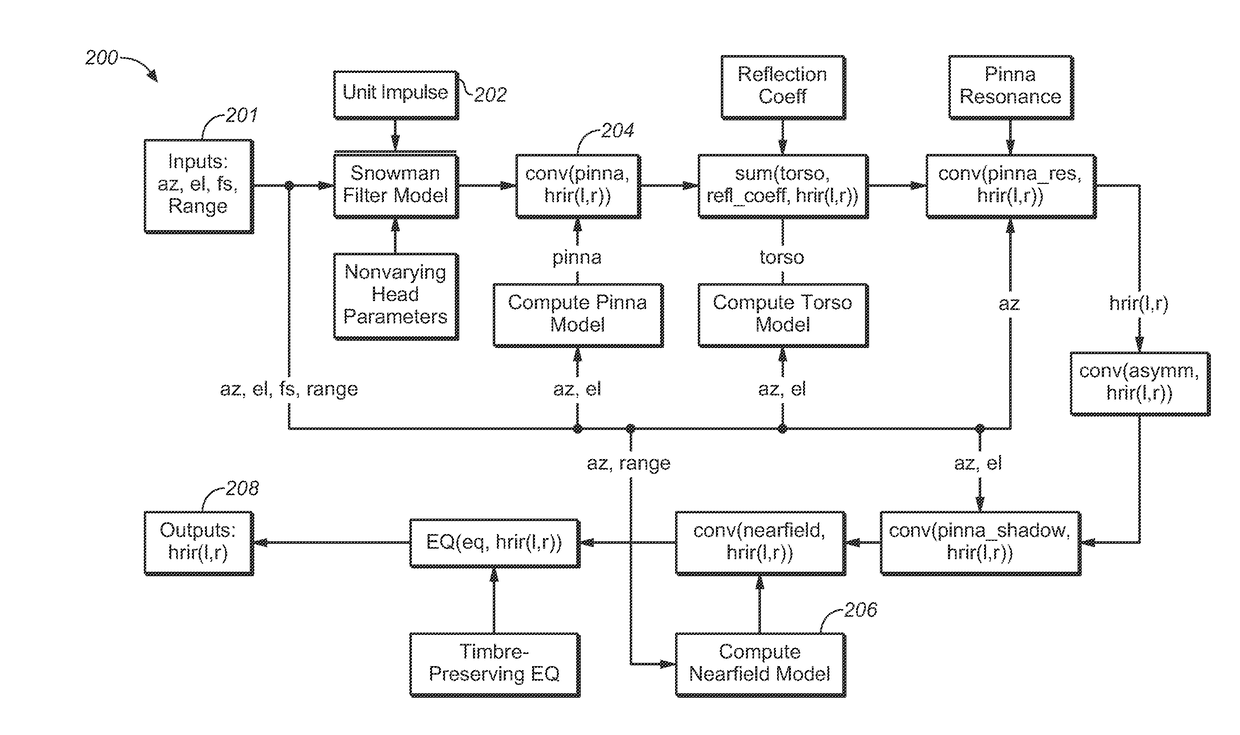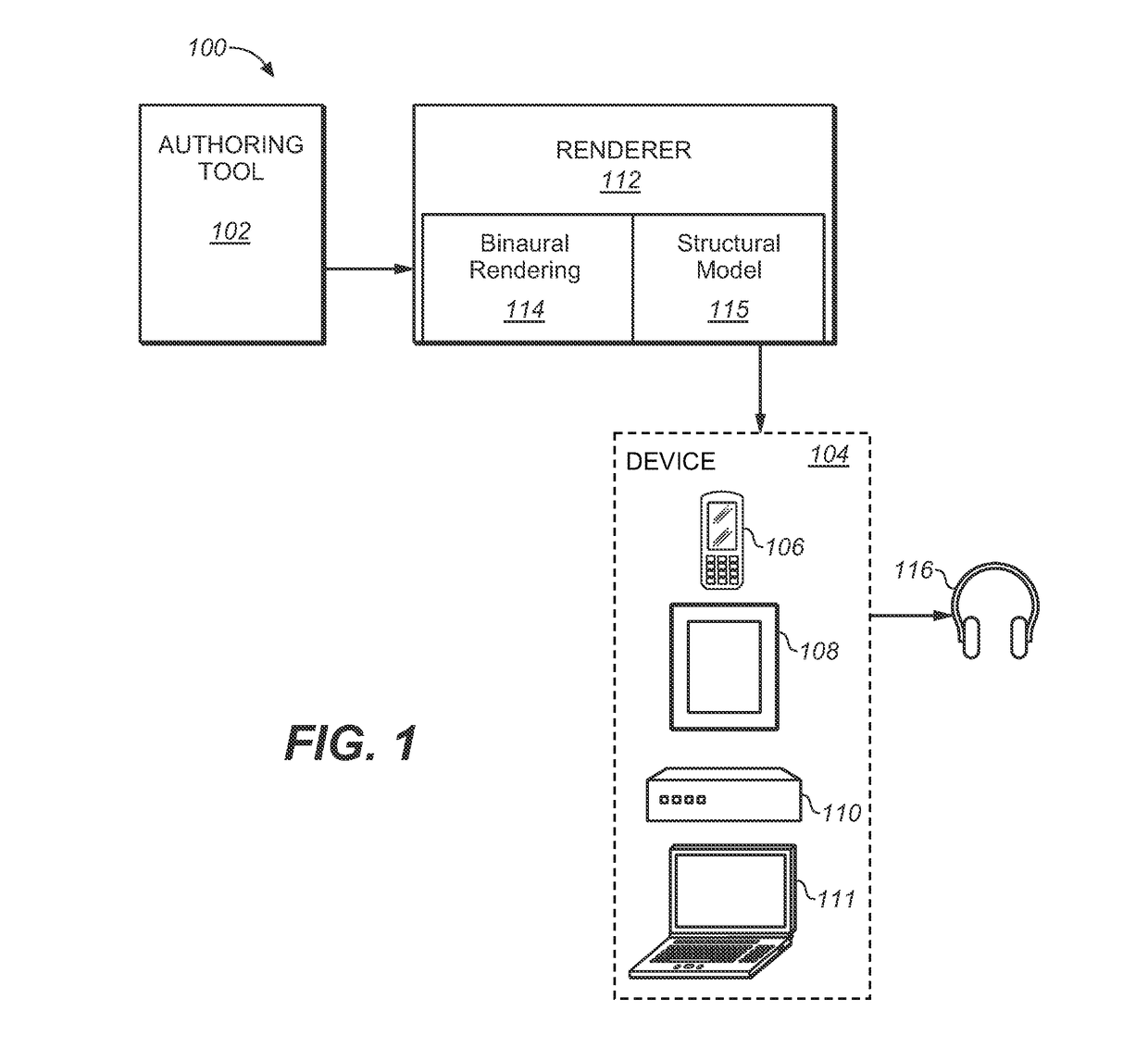Structural Modeling of the Head Related Impulse Response
a head related impulse and structural modeling technology, applied in the field of audio signal processing, can solve the problems of not having the processing power to run full hrtf simulation software, the system is usually lightweight, compact, low-power, etc., and achieves the effect of improving spatial reproduction
- Summary
- Abstract
- Description
- Claims
- Application Information
AI Technical Summary
Benefits of technology
Problems solved by technology
Method used
Image
Examples
Embodiment Construction
[0009]Embodiments are described for systems and methods of virtual rendering object-based audio content and improved spatial reproduction in portable, low-powered consumer devices, and headphone-based playback systems. Embodiments include a signal-processing model for creating a Head-Related Impulse Response (HRIR) from any given azimuth, elevation, range (distance) and sample rate (frequency). A structural HRIR model that breaks down the various physical parameters of the body into components allows a more intuitive “block diagram” approach to modeling. Consequently, the components of the model have a direct correspondence with anthropomorphic features, such as the shoulders, head and pinnae. Additionally, each component in the model corresponds to a particular feature that can be found in measured head related impulse responses.
[0010]Embodiments are generally directed to a method for creating a head-related impulse response (HRIR) for use in rendering audio for playback through he...
PUM
 Login to View More
Login to View More Abstract
Description
Claims
Application Information
 Login to View More
Login to View More - R&D
- Intellectual Property
- Life Sciences
- Materials
- Tech Scout
- Unparalleled Data Quality
- Higher Quality Content
- 60% Fewer Hallucinations
Browse by: Latest US Patents, China's latest patents, Technical Efficacy Thesaurus, Application Domain, Technology Topic, Popular Technical Reports.
© 2025 PatSnap. All rights reserved.Legal|Privacy policy|Modern Slavery Act Transparency Statement|Sitemap|About US| Contact US: help@patsnap.com



